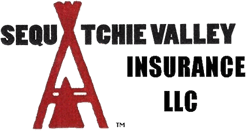- Insurance Services
- Auto, Home & Personal Insurance
- Business Insurance
- Business Interruption Insurance
- Business Owners Package Insurance
- Commercial Auto Insurance
- Commercial Property Insurance
- Commercial Umbrella Insurance
- General Liability Insurance
- Hotel & Motel Hospitality Insurance
- Professional Liability (E&O) Insurance
- Surety Bonds
- Workers' Compensation Insurance
- - View All Business
- Life Insurance
- Group Benefits
- About
- Policy Service
- Contact
Article originally posted on www.insuranceneighbor.com(opens in new tab)

A captive insurance company is a subsidiary owned by a parent organization, established primarily to insure its owner. The captive insurer writes insurance policies for the parent organization and does not insure any other company. It provides risk mitigation for the parent company or a group of related companies. A captive insurance company may be formed:
- When a parent company is unable to find a suitable outside insurer against particular business risks
- When insurance provided through the captive insurer is more affordable
- When the captive insurance company provides better coverage for the parent company’s risks
- If tax savings are created when premiums are paid to the captive insurer
What Types of Companies Form Captive Insurance Companies?
Forming a captive insurance company is a type of corporate self-insurance. A separate entity is created to provide insurance services to the parent company. While this can offer financial benefits such as tax savings, there are additional expenses to consider, including personnel, administrative, and overhead costs. Parent companies forming captive insurers must also consider compliance issues. Because of these factors, captive insurance companies are predominantly formed by large corporations.
What Are the Tax Advantages of Captive Insurance Companies?
The tax benefits with captive insurance are simple. The parent company pays premiums to the captive insurance company and deducts those payments on its business taxes. Parent companies often locate captive insurance companies in Bermuda, the Cayman Islands, or other tax havens to avoid tax implications. Several states in the U.S. allow the formation of captive insurance companies. For captive insurance to be included in the category of insurance, the IRS requires that risk distribution and risk shifting be present. Risk shifting is the transfer of risk from one party to another.
What Are the Structures of Captive Insurance Companies?
There are five different structures for captive insurers:
- Single parent: The captive insurer is a wholly-owned subsidiary of a parent company, structured to meet individual company needs and potential third-party risk. The minimum annual premium is $1.2 million.
- Multiple parent: The captive insurance company is jointly owned by a group of companies in the same industry. The minimum annual premium is $500,000.
- Heterogeneous: The subsidiary is jointly owned by companies in different industries of a similar size who pool resources to form an insurance joint venture. The minimum annual premium is $500,000.
- Rent-a-captive: Companies in the same industry that are not large enough to form their own captive insurance company pay the captive owner a fee, which can be as little as $250,000 annually.
- Segregated cell: This is similar to the rent-a-captive structure. The owner of the cell facility holds the insurance license and is responsible for day-to-day management. Each cell is legally separated, so insurance risk, assets, and liabilities are not shared. Annual costs can be as little as $250,00.
Depending on the size and needs of your company and the risks it is facing, captive insurance may be an option. For more information, speak with one of our experienced agents.
Filed Under: Group Benefits